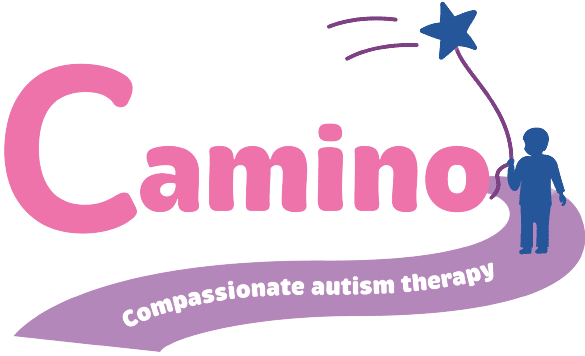ABA Therapy in Albuquerque

What Is ABA Therapy?
Applied Behavior Analysis (ABA) is a scientific discipline that focuses on analyzing, designing, and implementing meaningful changes in behavior. Using direct observation, measurement, and functional assessments, our ABA therapy in Albuquerque can identify the environmental factors that influence behavior. Board Certified Behavior Analysts (BCBAs) utilize the principles and procedures of ABA to create individualized treatment plans that promote meaningful and lasting behavioral change, particularly for individuals with autism.
ABA has been endorsed by the U.S. Surgeon General and the American Academy of Pediatrics as an effective treatment for reducing challenging behavior and increasing communication, language development, learning, and appropriate social behavior in individuals with autism.
Applied Behavior Analysis: The Foundation of ABA Therapy
ABA therapy identifies how environmental factors shape behavior and how modifying these factors can lead to positive change. By systematically analyzing these influences, ABA helps develop strategies that support learning, communication, and social interactions – key areas of developmental progress for individuals with autism. Parents and caregivers play an essential role in ensuring ABA therapy meets the needs of each child.

What Is an ABA-Certified Therapist’s Approach to Behavior Analysis ?
The ultimate goal of ABA therapy is to apply learned strategies to real-life situations. Therapists teach children by reinforcing positive behaviors while reducing behaviors that may hinder learning or social interactions.
ABA therapy also serves to help children acquire new skills, from communication to self-care, ensuring long-term growth and independence.
The Benefits of ABA Therapy Programs in Albuquerque
ABA therapy has been used for decades to support children with autism in developing essential life skills. In fact, some approaches and techniques have been around since the 1960s. Through targeted interventions, ABA helps to decrease challenging behaviors while fostering improvements in communication, emotional regulation, and independent daily living skills.
By implementing techniques that improve focus and attention, many children experience progress in areas such as self-care, academic readiness, memory, and social interactions, ultimately gaining greater confidence and autonomy. Our ABA providers offer quality programs that help prepare children for future learning opportunities.
How ABA Therapy Works for Positive Behavioral Change
ABA therapy uses evidence-based techniques to promote positive behavioral change. Each program is tailored to the child’s needs, using data-driven methods to reinforce desired behaviors and reduce interfering behaviors.
As a highly flexible treatment option, ABA therapy can take place in various settings, including schools, within the home, or at a center, with one-on-one or group instruction. This approach ensures that children receive individualized support that fits their environment and learning style. It also allows for frequent monitoring of progress toward developmental goals.
The Power of Positive Reinforcement in ABA Therapy
Positive reinforcement is a core principle of ABA therapy, encouraging desired behaviors through meaningful rewards. It’s been shown that people respond more readily to rewards than they do to punishment. When a child demonstrates a target behavior, they receive reinforcement that increases the likelihood of repeating that behavior in the future.
Reinforcement can take many forms, such as verbal praise, a toy, access to a favorite activity, or tangible rewards like stickers. Over time, this structured approach helps children build and maintain new skills in communication, self-regulation, and social interaction. Both parents and teachers play a crucial role in implementing reinforcement strategies consistently.
Key Elements of an Effective ABA Program
ABA programs are meant to be tailored to the needs of each patient they benefit. They should be flexible enough to help patients reach various behavior goals using an array of techniques and approaches.
Planning a program begins with thoroughly assessing a learner’s needs, skills, and living conditions. Treatment goals are established based on a combination of these factors, including the patient’s family situation. BCBAs work closely with caregivers to prepare individualized treatment strategies.
Typically, treatment goals fall into one or more of several categories, including social skills, play, motor skills, academic skills, communication, behavior reduction, and self-care.
Above all, ABA program treatment plans and autism testing should not be overwhelming. Instead, they should be broken down into step-by-step processes to help patients reach their goals over time.
Progress towards these goals should be measured through therapy sessions and regular reviews. Treatment goals always provide flexibility in making necessary changes as goals are met.
Three Components of Behavior in ABA Therapy
Before designing an intervention and determining preferred behavior goals, ABA therapists analyze the patient’s behavior through three key components: antecedent, behavior, and consequence.
- Antecedent: The event or situation that occurs before a behavior.
- Behavior: The individual’s response to the antecedent.
- Consequence: The outcome that follows the behavior, which can either strengthen or weaken its occurrence.
By identifying these elements, therapists can pinpoint behavior patterns and determine the most effective strategies for intervention. While positive reinforcement is commonly used, other consequences—such as neutral responses or redirection—are also considered depending on the behavior and therapeutic goals.
Does ABA work for autism treatment?
Over the years, multiple studies have been performed regarding the efficacy of ABA therapies. Twenty of those have shown ABA to be successful in the vast majority of long-term and intensive therapy cases that involve children with autism. Of course, like other autism services, these results are never guaranteed.
It’s important to note that intensive and long-term therapy refers specifically to programs in which therapy is provided from 10-40 hours a week. This would happen over the course of one to three years in succession.
Families of loved ones with autism who want to explore ABA programs can confidently lean on the fact that it is an evidence-based treatment option. The U.S. Surgeon General has given this title in tandem with the American Psychological Association.
ABA Therapy Service Providers in Albuquerque
Our certified ABA therapy programs in Albuquerque are run by a multi-faceted group of professionals. Registered Behavior Technicians, therapists, and Board-Certified Behavior Analysts (BCBAs) are all part of the team.
Typically, BCBAs oversee the entire program. These individuals are expected to have acquired a state license to practice, passed a national certification exam, and earned their master’s degree or doctorate in behavioral analysis or psychology.
Registered Behavior Technicians who provide services within ABA programs report to BCBAs. They are responsible for working with patients directly in order to help them meet their treatment goals through practiced skills.
ABA and Insurance Coverage
When it comes to ABA, it’s essential to speak with your independent insurance provider to understand what percentage of care is covered under your plan. In many cases, private health insurance covers ABA services in Albuquerque, although specifics can fluctuate state by state.
At Camino Behavioral Health Services, we’re proud to provide all Medicaid recipients with free ABA therapy services in Albuquerque. Give us a call at (505) 302-5383!
